Identification of DTL as Related Biomarker and Immune Infiltration Characteristics of Nasopharyngeal Carcinoma via Comprehensive Strategies
- PMID: 35264872
- PMCID: PMC8901051
- DOI: 10.2147/IJGM.S352330
Identification of DTL as Related Biomarker and Immune Infiltration Characteristics of Nasopharyngeal Carcinoma via Comprehensive Strategies
Abstract
Purpose: Although considerable progress has been made in basic and clinical research on nasopharyngeal carcinoma (NPC), the biomarkers of the progression of NPC have not been fully studied and described. This study was designed to identify potential novel biomarkers for NPC using integrated analyses and explore the immune cell infiltration in this pathological process.
Methods: Five GEO data sets were downloaded from gene expression omnibus database (GEO) and analysed to identify differentially expressed genes (DEGs), followed by Gene Ontology (GO) and Kyoto Encyclopedia of Genes and Genomes (KEGG) enrichment analyses. The four algorithms were adopted for screening of novel and key biomarkers for NPC, including random forest (RF) machine learning algorithm, least absolute shrinkage and selection operator (LASSO) logistic regression, support vector machine-recursive feature elimination (SVM-RFE), and weighted gene co-expression network analysis (WGCNA). Lastly, CIBERSORT was used to assess the infiltration of immune cells in NPC, and the correlation between diagnostic markers and infiltrating immune cells was analyzed.
Results: Herein, we identified 46 DEGs, and enrichment analysis results showed that DEGs and several kinds of signaling pathways might be closely associated with the occurrence and progression of NPC. DTL was recognized as NPC-related biomarker. DTL, also known as retinoic acid-regulated nuclear matrix-associated protein (RAMP), or DNA replication factor 2 (CDT2), is reported to be correlated with the cell proliferation, cell cycle arrest and cell invasion in hepatocellular carcinoma, breast cancer and gastric cancer. Immune infiltration analysis demonstrated that macrophages M0, macrophages M1 and T cells CD4 memory activated were linked to pathogenesis of NPC.
Conclusion: In summary, we adopted a comprehensive strategy to screen DTL as biomarkers related to NPC and explore the critical role of immune cell infiltration in NPC.
Keywords: DTL; NPC; biomarkers; machine learning algorithm; nasopharyngeal carcinoma.
© 2022 Wang and Zhang.
Conflict of interest statement
The authors report no conflicts of interest in this work.
Figures

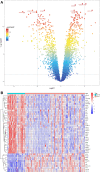
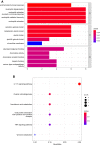
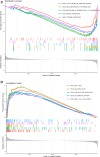
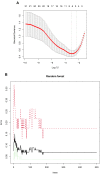
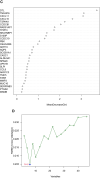






Similar articles
-
Identification of TYR, TYRP1, DCT and LARP7 as related biomarkers and immune infiltration characteristics of vitiligo via comprehensive strategies.Bioengineered. 2021 Dec;12(1):2214-2227. doi: 10.1080/21655979.2021.1933743. Bioengineered. 2021. PMID: 34107850 Free PMC article.
-
[Screen of key characteristic genes of nasopharyngeal carcinoma (NPC) base on machine learning and analysis of their correlation with immune cells].Xi Bao Yu Fen Zi Mian Yi Xue Za Zhi. 2023 Number;39(11):988-995. Xi Bao Yu Fen Zi Mian Yi Xue Za Zhi. 2023. PMID: 37980550 Chinese.
-
Differentially Infiltrated Identification of Novel Diagnostic Biomarkers Associated with Immune Infiltration in Nasopharyngeal Carcinoma.Dis Markers. 2022 Nov 17;2022:3934704. doi: 10.1155/2022/3934704. eCollection 2022. Dis Markers. 2022. PMID: 36438903 Free PMC article.
-
Integrated identification of key immune related genes and patterns of immune infiltration in calcified aortic valvular disease: A network based meta-analysis.Front Genet. 2022 Sep 21;13:971808. doi: 10.3389/fgene.2022.971808. eCollection 2022. Front Genet. 2022. PMID: 36212153 Free PMC article.
-
Identify potential prognostic indicators and tumor-infiltrating immune cells in pancreatic adenocarcinoma.Biosci Rep. 2022 Feb 25;42(2):BSR20212523. doi: 10.1042/BSR20212523. Biosci Rep. 2022. PMID: 35083488 Free PMC article. Review.
Cited by
-
Evaluation of Genes and Molecular Pathways Involved in Pathogenesis of Sickle Cell Anemia: A Bioinformatics Analysis and Future Perspective.Iran J Public Health. 2024 Jun;53(6):1404-1415. Iran J Public Health. 2024. PMID: 39430157 Free PMC article.
References
LinkOut - more resources
Full Text Sources
Research Materials

